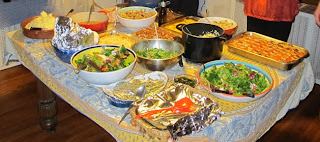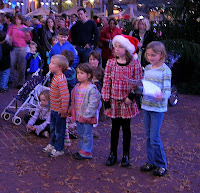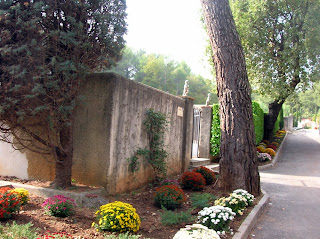F as in
•family,
•friends,
•food
•football
and
•Black Friday. (that’s a stretch I know but there is an F there!)
For my non-American readers, Black Friday is the day after Thanksgiving, a holiday for most Americans. Stores open at 5 a.m. or earlier with special sales to entice people to start their Christmas shopping. Some say it’s “black” because of frustrating traffic jams; others say it refers to the profit the stores hope to make during the Christmas season.
My memories of Thanksgiving go back to my early childhood, as is true for all Americans. But, due to my double life, – yes even then – these memories are not exactly those of other Americans.
Until I was 15, I called this holiday American Thanksgiving. I was brought up in Canada, the only other country that has a public Thanksgiving holiday. Canadians celebrate the second Monday of October. My parents and I always sat down to a turkey dinner followed by pumpkin pie on that day, as our Canadian friends were doing. Then, about 6 weeks later, on the 4th Thursday of November, I came home to the same smells and the same meal as our family celebrated Thanksgiving again. (My friends know that I love holiday rituals. I come by it naturally. Every year, our family of three consumed three turkey dinners in about 11 weeks to keep the traditions of two Thanksgivings and Christmas!)
When we moved to Jamaica, we stopped celebrating Canadian Thanksgiving but I continued to come home from school to the aroma of turkey and pumpkin pie on the fourth Thursday of November. The "family" and “food” traditions, thus, became firmly entrenched in my mind.
I was twenty the first time I spent Thanksgiving in the United States. After four “real Thanksgivings”, I went to France where I resumed my expatriate holiday -- “food” and “friends” but no day off, no football and no shopping.
This weekend marked my 10th Thanksgiving in Charlottesville – long enough to have established new traditions. Dinner is at Nancy and Fred’s, my good friends and neighbors. They host a large potluck buffet, inviting friends, neighbors, work colleagues and foreign students. Fred and Nancy provide hospitality, turkey, dressing, mashed potatoes and gravy. I bake a ham. Other guests bring side dishes, desserts and drinks. Our Thanksgiving meal includes egg rolls, samosa, rice dishes, and always something called “Do you know what this is?” provided by one or another of the foreign students. (The answer is always “No but have some, it’s good.”)




The shopping and football part of Thanksgiving have never been my traditions and I can’t seem to acquire them. I do participate in football to some extent, as I live about a ten minute walk from the stadium where the University of Virginia's team plays its arch-rival two days after Thanksgiving.
View leading from my street to the stadium on Game Day

Tailgating -- a picnic in the parking lot before the game -- is a great tradition.

Some never make it to the game.

The stadium fills. All hopes still permitted.


Today is the eye of the hurricane – a calm place from which to remember the fun of the last three days while gearing up for the month of festivities ahead. May we all have the energy to enjoy the ride.
P.S. Pictures of Thanksgiving dinner are courtesy of my friend Jeanne because I forgot my camera. Thanks Jeanne!











































